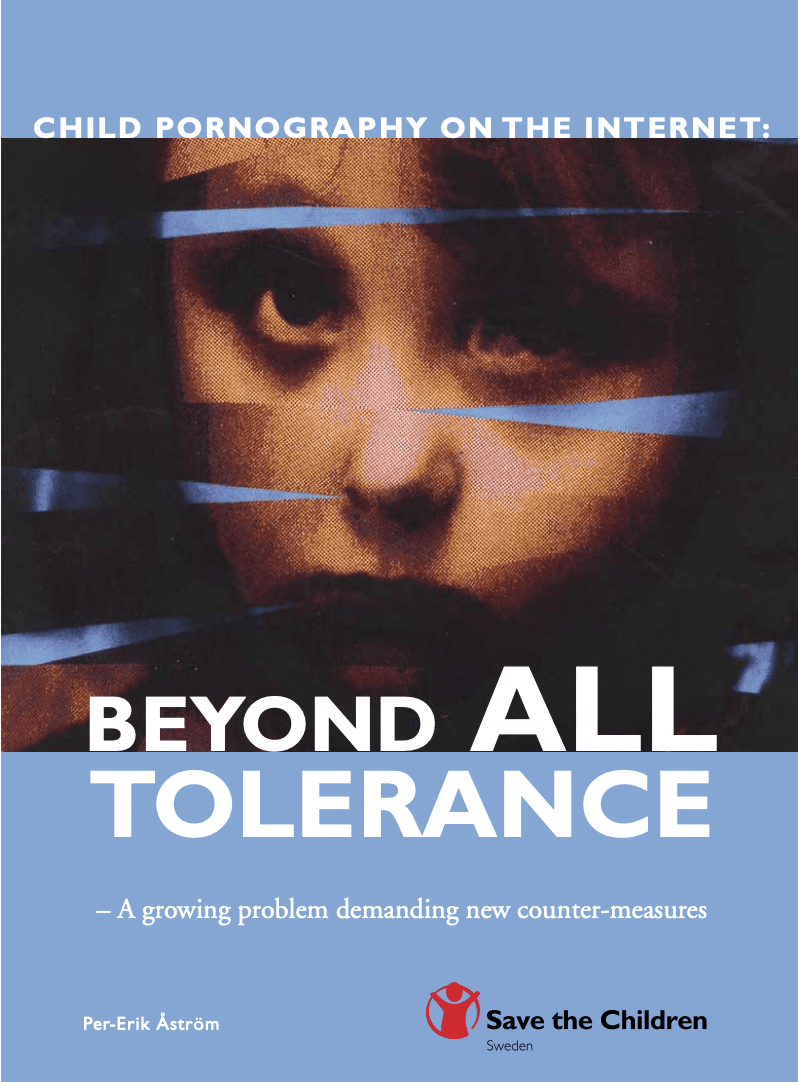
Child Pornography on the Internet: A growing problem demanding new counter-measures
Child pornography on the Internet is a growing problem. This is indicated by a Sweden-wide police raid on 25 May 2004, netting 118 men suspected of breaching child pornography laws. The men are suspected of buying child pornographic material on Internet sites, making on-line payments with credit cards.
The volume of child pornography on the Net is increasing rapidly. The volume is impossible even to estimate. Interpol has a picture database with 20,000 images of child pornography and estimates that the number of exploited children shown to be between 10,000 and 20,000. From the University of Cork’s COPINE Project we know that for every week, four or five new children appear in child pornography Internet traffic. There is a continuous demand for new subject matter at the same time as older material remains in circulation. A number of extensive rings of Netpaedophiles have been uncovered in recent years. There have been considerable advances in international co-operation through Interpol and Europol, and various methods of monitoring the Internet have been developed. When possession of child pornographic materials was criminalized in Sweden in 1999 it was a boost for crime prevention activities in this field. Since 2000, more than 80 sentences have been handed down in Sweden for offences related to child pornography. The division within Sweden’s National Criminal Investigation Department (Rikskriminalen) concerned with the issue, the Special Objects Unit, provides vital support for local police authorities.
The Save the Children Sweden Hotline was set up in January 2000. There were two reasons: because children have a self-evident right to protection from all forms of sexual exploitation, we wanted to disrupt or stop traffic in child pornography over the Internet. The second reason was our need to accumulate knowledge so we could change the situation.
Since its launch more than four years ago, the Save the Children Sweden Hotline website has received more than 22,000 tips. Most have been about child pornography on the Web but child pornographic material is increasingly to be found in other Internet communications systems and technologies such as P2P, e-mail, and chat rooms. Our Hotline has been pro-active on-line and has been able to supplement the crime prevention work of the police. Thanks to tip-offs, the Hotline has contributed to the uncovering of several extensive rings of child pornography offenders. And if the pornographic material is familiar, the Hotline will contact the closest contactable point of origin on the Internet, for example a web host, which will generally delete the offensive material. In this way, the Hotline has been able to shut down thousands of child pornography home pages. The problem is that the material constantly re-appears elsewhere.
Many private citizens, teachers and social workers have contacted the Save the Children Sweden Hotline to discuss the vulnerability of children on the Internet and because of real worry that children in their proximity can be involved in the production of child pornography. The Hotline has also established contact with IT actors in Sweden to inform them about the methods of disseminating child pornography, and also to offer instruction on the purely technical steps the industry should take to trace log files, etc.
Through our work with the Hotline, Save the Children Sweden has gathered indepth knowledge about the exploitation of children on the Internet, about the traffic in child pornography and how paedophile rings operate on the Net. The responsibility for attacking child pornography crime on the Internet belongs to the police. Following up tip-offs and assessing the child pornographic material are central to crime fighting. The police should therefore set up a permanent national Hotline. Save the Children Sweden will gladly share our experiences. Child pornographic traffic on the Internet confronts us with a new kind of criminality and new aspects of the exploitation of children and their inadequate rights as victims of crime. Only a small number of the children have so far been identified.
As of May 2004, Interpol knows the identity of approximately 260 of the estimated 10-20,000 children police believe are involved. The real figure is in fact higher, since Interpol cannot keep or access sufficient information from national police authorities in various countries. This complicates international co-operative efforts. As of April 2004, Sweden’s National Criminal Investigation Department had identified 110 Swedish children that had been subjected to documented sexual abuse.
Sexually exploited children in the images can easily disappear in the mountain of unidentified child pornography victims and thus remain susceptible to renewed abuse. These children are also unlikely to ever get help in working through their experiences or justice for the violations they were subjected to. There is a lack of know-how, experience and procedures for centring the issue on the individual child. Some examples quoted in this report contains descriptions of children. The events are true, but all personal details have been changed to protect the children’s identities.
Read more here.
